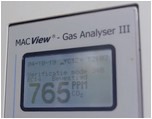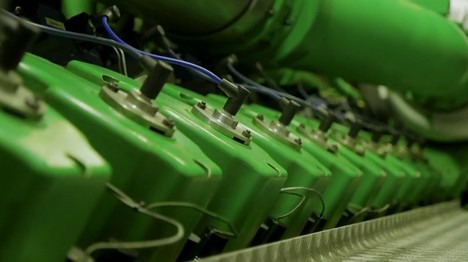It is well known that CO2 contributes to a good growing crop. It is also known that NOx, a gas that is produced during incineration such as in CHPs, is harmful to the crop. But research now shows that small amounts of NOx can actually increase yield.
 A remarkable conclusion, says Jacco Besuijen. He is an energy manager at Prominent, a producer organization which consists of 420 hectares of vine tomato cultivation at 54 locations. Prominent participated in research conducted by Environmental Monitoring Systems and Hoogendoorn Growth Management because the tomato growers at most of the locations work with air pollution detectors from EMS, the MACView Greenhouse Gas Analyzer.
A remarkable conclusion, says Jacco Besuijen. He is an energy manager at Prominent, a producer organization which consists of 420 hectares of vine tomato cultivation at 54 locations. Prominent participated in research conducted by Environmental Monitoring Systems and Hoogendoorn Growth Management because the tomato growers at most of the locations work with air pollution detectors from EMS, the MACView Greenhouse Gas Analyzer.
Previous research shows that too high concentrations of NOx in CO2 dosing can lead to a loss of 6% yield. In this new study, dosing was carried out for 500 days, mainly with CHP.
Too high NOx concentrations reduce CO2
In a greenhouse with tomato cultivation, in addition to the known parameters, also ethylene, NOx and photosynthesis were measured and scales were placed to observe the weight gain in 24 hours. The data analysis clearly showed that too high NOx concentrations lead to a decrease in electron transport. This even though there were higher CO2 concentrations in the greenhouse at those times.
"It is therefore important for growers to know that you assume to introduce more CO2 and expect that growth will be stimulated," says Jan-Kees Boerman of EMS. "Research however shows that too high NOx concentrations lead to a clear decrease in electron transport, and therefore a decrease in biomass conversion (growth) and therefore a decrease in harvest.
The too high NOx concentrations actually destroy the higher CO2 concentrations. This is, among other things, another reason to use CO2-setpoints that are not too high, certainly during cloudy weather or with closed windows."
Higher yields achievable with correct dosage
The research shows that with lower CO2 concentrations and a correct NOx concentration, very high yields are achievable, which of course is related to electron transport. "In a sense you can say that too high NOx concentrations over time gradually lead to poisoning of the crop," says Jan-Kees.
That is not visible externally. "Degradation of NOx in the plant costs energy, we see that reflected in the decrease in electron transport and that leads to a significant decrease in growth."
Optimum NOx concentration
Conversely, it has been observed that NOx in low concentrations leads to slightly higher yield compared to greenhouses without NOx present. "In practice, it concerns relatively low concentrations," says Jan-Kees. "NOx breaks down into nitrogen as well as oxygen and these substances can be used as a building block for plants. This effect contributes to growth, and is also called the 'Plant Vitalization Effect'. This effect applies to most crop types."
With this knowledge there is a kind of optimum NOx concentration for crops. "It is therefore an opportunity for growers to regulate NOx in addition to the CO2, which is already happening in some greenhouses," according to Jan-Kees' experience. "The research shows that there is a higher crop yield due to the correct use and control of the NOx concentrations that are released in the greenhouse.
This Plant Vitalization Effect is a possibility to further optimize cultivation with CO2 dosing," Jan-Kees concludes. EMS analyzers measure different CO2 sources in greenhouses: CHP / RGR, boiler CO2, OCAP CO2 and liquid CO2.
For more information:
Environmental Monitoring Systems (EMS) B.V.
[email protected]
www.macview.nl
